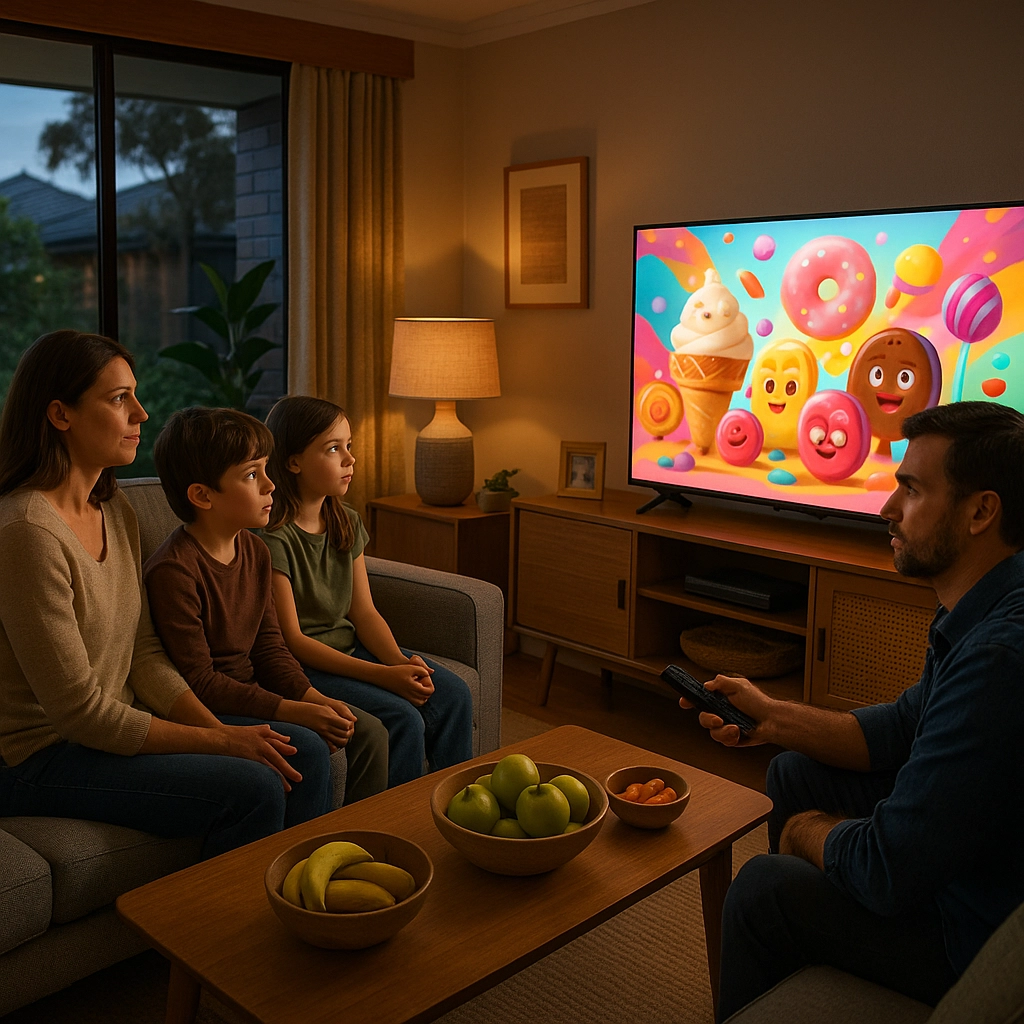Do you ever feel bombarded by junk food ads right when your kids are viewing their favourite shows or scrolling on a device? You’re not alone—and the government has noticed, too. After mounting pressure from health advocates and parents, new restrictions on advertising unhealthy foods are now (finally) on the horizon in the UK, with global ripple effects—including for Aussie families. At Fugen Health in Erina, we’re passionate about helping families cut through the noise and make the healthiest choices possible, so let’s break down what these advertising crackdowns truly mean for your daily life, especially if you’re raising kids in Australia.
Understanding the UK Ban and Why It Matters
Let’s quickly clarify what’s changed: the UK government planned to implement tough measures targeting ads for foods high in fat, salt, or sugar (HFSS)—the big troublemakers linked to rising childhood obesity rates. But, after a last-minute push from the food industry, these restrictions have been delayed from October 2025 to January 2026. There’s also a voluntary phase and, controversially, a big loophole for “brand-only” ads (things like logos and mascots, rather than actual product promos).
How Does This Actually Work?
- TV Restrictions: No HFSS ads before 9pm—but this is voluntary until January 2026.
- Online Ad Ban: Paid-for online ads for HFSS foods are now banned from January 2026—again, a delay from the original plan.
- Brand Exemptions: Advertisers can continue with non-product “brand” advertising, blunting the rules’ impact.
- Enforcement: The ASA (Advertising Standards Authority) is in charge, and there are penalties for companies breaking the rules.
Why should Aussie families care about what’s happening overseas? Because strict or weak ad policies set a precedent. Australia is watching these moves and making its own decisions about how (and whether) to protect children from unhealthy food marketing.

Global Crackdowns: How Other Countries Approach Junk Food Marketing
Australia isn’t the only country debating how much power advertisers should have over young minds (and stomachs). Countries like Norway, Sweden, and Quebec in Canada have enacted tough bans against junk food ads during children’s programming, and the research is clear: such moves do help reduce unhealthy food demand among kids.
- In Quebec, for example, a long-standing ban has contributed to some of the lowest childhood obesity rates in Canada.
- Norway and Sweden both have strict times (and media channels) where junk food ads simply aren’t allowed.
- Australia, meanwhile, only restricts timing (kids’ shows) or tactics (like using cartoon characters), but enforcement is patchy and industry-led.
Recent research cited by Australian government discussions suggests that exposure to food ads significantly increases calorie intake in children during and after media viewing. In theory, removing fast-food ads could slash childhood obesity rates by 18%. Even stepwise, partial restrictions are showing benefits, though total bans offer the greatest gains.
Want more strategies to fight back against hidden junk foods? See: Are Aussie Supermarkets Sabotaging Kids' Nutrition? What Parents Need to Know About Hidden Junk Foods
What the Delays & Loopholes Mean for Aussie Families
You might be wondering: how does a delayed, watered-down British ban affect my family in Erina or elsewhere in Australia? Here’s the nuts and bolts:
- Advertising controls are catching on—but are far from perfect. The delays and exemptions mean some ads for unhealthy foods are still getting through, especially those with general branding.
- Australian kids are still being targeted. With limited local restrictions, don’t expect channels and streaming platforms to cut off unhealthy ads any time soon. Many services, especially online, still show promotional content from international brands.
- Industry interference is slowing things down. Food companies have powerful lobbyists. The more they succeed overseas, the more likely Australian policymakers are to hesitate or water down reforms.
Families need to be more active than ever in filtering food messaging. That means media literacy, talking with kids about marketing tricks, and building a home environment where healthy behaviours are the default.
At Fugen Health in Erina, we help Central Coast families build simple, resilient habits—from healthy pantry swaps (Pantry Clean Out tips here) to meal planning and label reading.
5 Things Every Parent Should Know About Food Ad Bans
1. Even partial ad bans help—but don’t fully protect your kids.
Banning HFSS ads during certain hours or on certain platforms tends to decrease “pester power” for unhealthy snacks. However, gaps (like existing voluntary rules, or branding exemptions) mean not all advertising exposure disappears.
2. Cartoon characters and mascots are still allowed in many ads.
Unless specifically targeted, many ad bans don’t restrict the use of cartoons or cultural icons that appeal to kids. Cartoon characters still have a powerful effect on what children want and ask for. Check out our tips on dealing with sneaky marketing tricks here.

3. Brands will pivot—be ready for new tactics.
With outright HFSS product ads restricted, companies invest more in brand-building: think big sponsorship deals, visually appealing mascots, and branded apps or games.
4. Parental involvement makes the biggest difference.
Research shows parents who regularly talk to children about nutrition and set consistent limits on ad exposure help build healthy food preferences—regardless of advertising bans.
5. Advocacy still matters.
Don’t underestimate your voice as a parent. Raising concerns with schools, local community groups, and policymakers accelerates the adoption of stronger advertising restrictions.
Want support building a healthier home environment? Learn about Fugen Health in Erina and our approach to family well-being: See our blog for practical tips.
Practical Tips: Shield Your Family from Unhealthy Food Marketing
The ad industry is clever, but your family can still thrive in a world of “brand bombardment.” Here’s what you can do:
- Prioritise Whole Foods. Stock your kitchen with fresh fruits, veggies, lean proteins, and whole grains—foods not heavily advertised or “branded” in commercial spaces.
- Hit the Pantry Together. Regularly audit your snack shelf for HFSS items. Try our go-to strategies for a healthy pantry clean-out.
- Empower Kids as Savvy Consumers. Teach your children the tricks advertisers use—mascots, rewards, catchy jingles—so they’re less susceptible.
- Set Media Boundaries. Limit exposure to ad-heavy platforms (like commercial TV or YouTube) during peak ad hours. Opt for ad-free streaming when possible.
- Model Mindful Eating. Cook and eat meals together, minimising device use so eating is about food—not ads or distractions.
- Get Outside and Stay Active. Physical activity and exposure to sunlight are important, too! Instead of a snack break in front of the TV, encourage movement—think walks, skate parks, or backyard games.

Why All This Matters for Your Family’s Wellness Story
The bottom line? While new advertising restrictions—here and overseas—are a step in the right direction, they’re not a cure-all. Food companies will always find creative ways to reach your family.
At Fugen Health in Erina, we see firsthand how parents juggling busy lives on the Central Coast feel overwhelmed by the onslaught of unhealthy messaging. That’s why our resources centre around empowering Mums, Dads, and carers to focus not just on what’s off limits, but on building up their children’s knowledge and habits for a vibrant, healthy life.
Need more help reclaiming your family’s food environment? Explore our latest health and nutrition insights for families:
- Smart Eats on a Budget: How to Cut Food Costs Without Sacrificing Your Health
- Are Aussie Supermarkets Sabotaging Kids' Nutrition?
Bookmark the Fugen Health in Erina blog for weekly tips on family nutrition, gut health, movement, and more—delivered in clear, actionable language.
Final word: Stay curious, keep advocating, and remember that the most powerful influencers in your home are you and your kids. Together, you can outsmart even the most persistent junk food ads.

